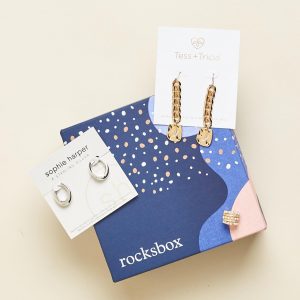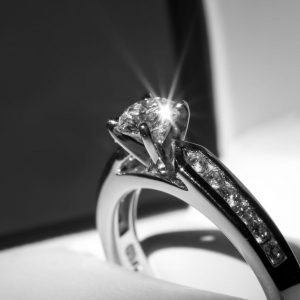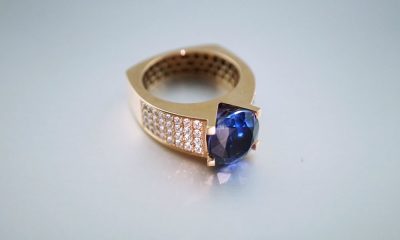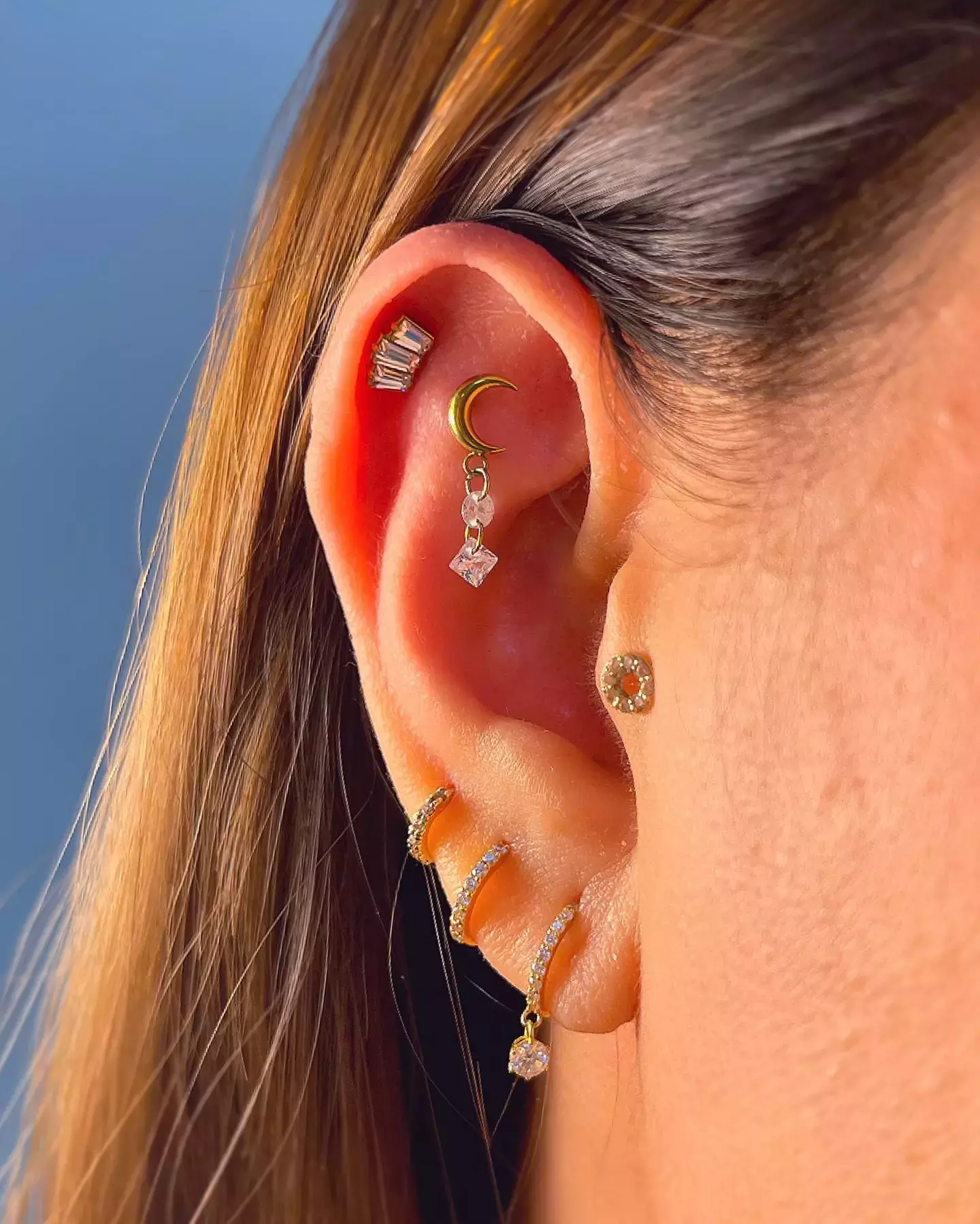
I got my first ear piercings at age 10, and I loved them from the start. Years later, when I decided to get a second piercing, I realized that piercing aftercare has changed quite a bit! Back then, we were told to twist our earrings frequently—a habit that often led to irritation and crusty buildup. But today, cleaning and caring for a new ear piercing is much simpler. After chatting with Dr. Dornechia Carter, a dermatologist, and Sam Isaacs from the piercing studio Studs, I learned that the best aftercare practices focus on minimal contact and letting the body heal naturally. Here’s the updated guide on how to clean a new ear piercing for safe, smooth healing.
How to Clean Your Ear Piercing Properly
The golden rule for new piercings? Less is more. To avoid irritation, avoid touching or twisting the piercing unnecessarily. If you need to handle it, always make sure your hands are freshly washed. Both Dr. Carter and Sam recommend a gentle cleaning routine two to three times a day. Avoid scrubbing the area to prevent irritation. Instead, rinse with a sterile saline solution or diluted water and soap, finishing with a final saline rinse. This method is effective and gentle, allowing your skin to heal without disturbance.
For those who prefer not to spray directly onto the ear, use a clean gauze pad or non-shedding cotton applicator to apply the solution. Personally, I found that using a saline spray twice a day helped my piercing heal smoothly in about a month.
In addition, try not to sleep on the side of your fresh piercing to minimize friction, and consider tying up your hair or wearing a protective bonnet to avoid snags. Even if your piercing looks healed, stick to this gentle cleaning routine for at least four weeks. After that, you can reduce cleaning frequency to once or twice daily as recommended by Dr. Carter.
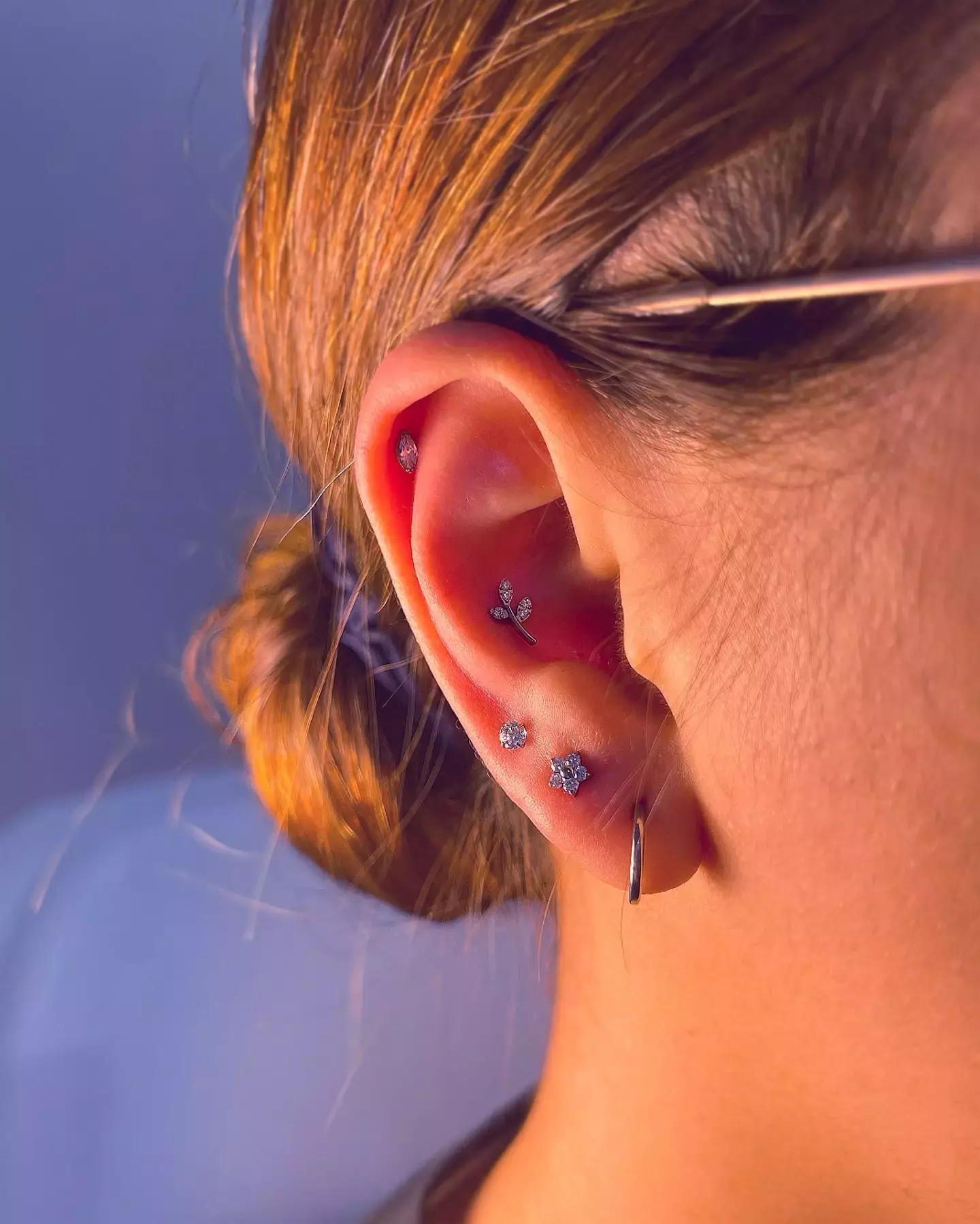
Choosing the Best Jewelry for New Piercings
Along with proper cleaning, the jewelry you wear can make a big difference in the healing process. Sam advises choosing jewelry made for the specific type of piercing you have; for instance, a conch piercing may require different jewelry than a lobe or helix piercing. Always opt for hypoallergenic metals like surgical titanium or 14K gold, which are less likely to cause irritation. Jewelry designed for new piercings, often called “piercing jewelry,” features smooth, flat backs that won’t poke your neck or snag on hair, making them ideal for new piercings. Dr. Carter adds that some piercing jewelry is designed with sharper posts, making them easier for initial placement and reducing movement during healing.
How Long Do Ear Piercings Take to Heal?
Healing times for piercings vary depending on location and individual body response. Sam explains that earlobe piercings usually take around 4-6 months to fully heal, with many people able to change their jewelry after about two months. For more complex ear piercings, like a helix or daith, healing can extend to 6-12 months. Your body’s healing signals—like a lack of discharge, redness, or soreness—are the best indicators of a fully healed piercing. Listen to these cues, and don’t rush the process, as everyone heals at their own pace.
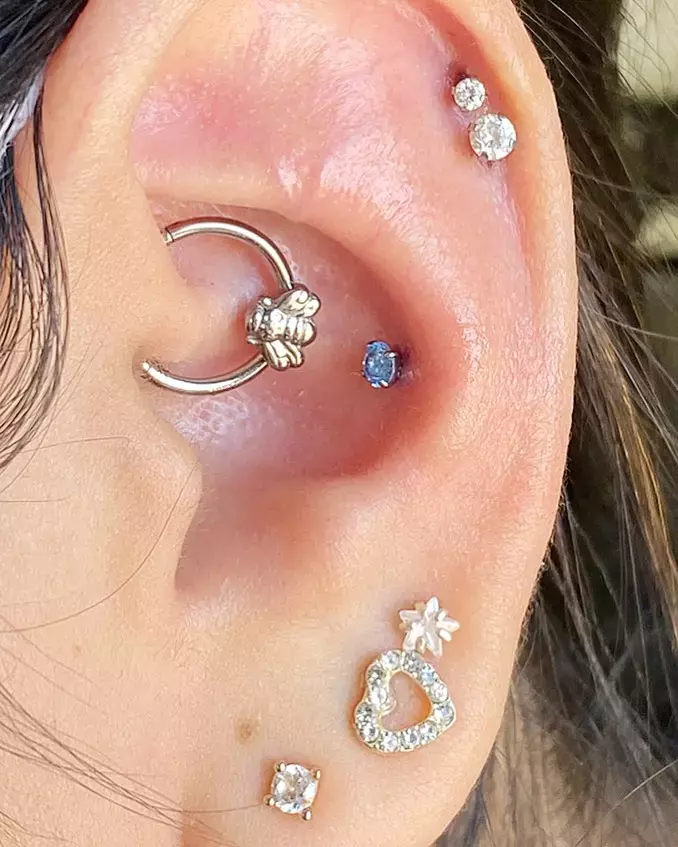
Recognizing Signs of Infection in a New Piercing
While mild discharge or slight irritation can be normal with new piercings, it’s important to know when symptoms point to infection. Swelling, pus, and persistent redness are warning signs that should prompt a visit to a piercer or doctor. According to Dr. Carter, early intervention is crucial for treating an infection effectively. If the infection is severe, it may be necessary to remove the earring temporarily to allow the area to heal.
FAQs
Q: Can I clean my ear piercing with just water?
A: While water can be gentle, it’s best to use a sterile saline solution or a diluted water-and-soap mixture for effective cleaning and to avoid introducing bacteria.
Q: Is it okay to twist my new earrings while cleaning?
A: No, twisting can cause irritation and delay healing. Leave the piercing undisturbed and let it heal naturally with minimal contact.
Q: How soon can I change my new piercing jewelry?
A: Wait at least two months for lobe piercings, though upper ear piercings may require longer. Always consult your piercer before making changes to ensure the piercing is ready.
